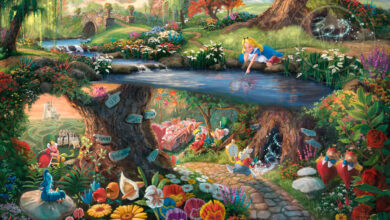
Opinion
The Discursive Shift in Moroccan Advertisements
Khadija Badri is a Moroccan English student and a spoken word writer and performer. She got her BA degree at the faculty of letters and humanities, University of Chouaib Doukkali, El Jadida. She had been once a member-founder of a “Live room” association.
El Jadida, Morocco
Media plays a major role in propagating ideologies that most viewers consume blindly. Women constitute a high percentage in watching media and precisely television. They are accustomed to consume variety of media texts. This paper is going to discuss the awareness raised among women when it comes to the consumption of media texts that concerned gender in particular.
This awareness causes a shift in the dominant discourse in media-that of patriarchy. Adopting feminist media theories, this paper tends to discuss the evolution of women’s consumption of media texts related to gender relying on some advertisements broadcasted in the Moroccan channel 2M.
Feminist media theory relies on feminist theory. It applies concepts to articulate feminist values to media procedures. It sheds light on women representation in news and entertainment across media platforms. Feminist media theory addresses gender biases that media producers disseminate especially in advertising.
Advertising is considered to be the predominant source of misrepresentations. Most advertisements on gender use the woman as a commodity. Wolf (1991) argues that women’s beauty has two functions. First, it is social. It constrains women’s behavior within the frame of femininity and the beauty model that every woman should look like, and it sets them in an anxious competition by providing standards of beauty like body shape and skin color. Second, it is economic. Women’s beauty is regarded as a commodity that can be bought and sold.
Women should be at the disposal of the male gaze. The image of woman, as Mulvey states it, is always regarded as (passive) raw material for the (active) gaze of man.
Advertising does not only constrict women social behavior, but it also restricts women’s role in society. Women in advertisement do not belong anywhere but to their husbands’ home. They should joyfully do the housework and take care of the whole family so they can live a happy life. In advertisement we consume the ideology that for a woman to be a good woman, she should do the housework all by herself, take care of the children and at the end of the day she should look good for her husband when he comes back home. This is the key for an ideal successful marriage.
The advertisements related to gender are usually broadcasted within the frame that women are in trouble and they need men to solve the problems for them. In “Mr. Clean” commercials, for example, we see a woman who is trapped in a messy house. Her mother-in- law is waiting downstairs. The woman is desperate. It is in that moment when Mr. Clean appears as a super hero and saves the woman in a glimpse of an eye. In this commercial, women do not even succeed in doing the housework. They are dependent on men to provide them with the solution even within the domestic sphere.
This hegemonic discourse becomes hard to maintain nowadays. Both women and men become aware of the misuse of gender in media. In social media, “Nestle” broadcasts a reality show #baghi ntzewej in order to provide women with receipts in a new way. It brings five beautiful women who compete against each other for the sake of one man “sidi anass”. Both genders see this reality show as an insult to women. They use social media to express their anger towards promoting such program. They write hash tags like “the notion of women is resumed to a desert! What a scandal”, “it’s a SHAME” and “this is an insult to both men and women”.
These reactions on social media oblige “Nestle” manufacturer to apologize for all Moroccans and stop the reality show program immediately. It is thanks to social media platforms that women have the possibility to control media content and have an influence on the producers of advertisements. Now we see advertisements that give priority to women. For example, “Groupe Credit Agricole” produces a commercial that says the Morocco that we love is that of youth and of the woman at first. This commercial acknowledges women’s worth. Unlike other commercials, the commercial produced by “Groupe Credit Agricole” does not restrict women’s role to the home.
For the first time in 2M’s history, Mio, a dishwashing liquid, produces a commercial in the form of an apology. It is an apology from men to women for all the time they did not help them in doing the housework. The commercial says this is a new age where we should all help each other inside the domestic sphere.
This awareness of consumption and the shift of discourse in media texts can never be achieved without awareness. Feminist media theory helps both genders to recognize the gender biases as well as women’s misrepresentation in media. Now, women are exposed to a new kind of media, social media, where their voices are heard. It is a sphere through which they have the ability to change commercial contents as well as sexist programs.
References:
-Mulvey, L. (1975). Visual Pleasure and Narrative Cinema. Oxford Journals, 16(3):6-18.
Doi:10.1093/screen/16.3.6.
-Wolf, N. (2015). The beauty myth. London: Vintage Books.



